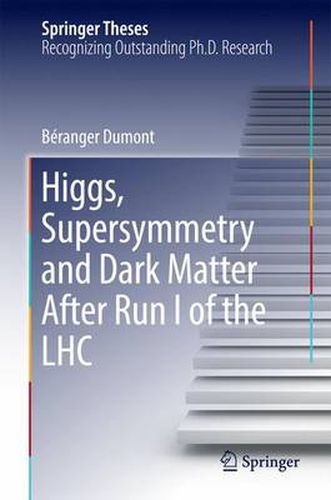Readings Newsletter
Become a Readings Member to make your shopping experience even easier.
Sign in or sign up for free!
You’re not far away from qualifying for FREE standard shipping within Australia
You’ve qualified for FREE standard shipping within Australia
The cart is loading…






This title is printed to order. This book may have been self-published. If so, we cannot guarantee the quality of the content. In the main most books will have gone through the editing process however some may not. We therefore suggest that you be aware of this before ordering this book. If in doubt check either the author or publisher’s details as we are unable to accept any returns unless they are faulty. Please contact us if you have any questions.
This work was nominated as an outstanding PhD thesis by the LPSC, Universite Grenoble Alpes, France. The LHC Run 1 was a milestone in particle physics, leading to the discovery of the Higgs boson, the last missing piece of the so-called Standard Model (SM), and to important constraints on new physics, which challenge popular theories like weak-scale supersymmetry. This thesis provides a detailed account of the legacy of the LHC Run 1
Yregarding these aspects. First, the SM and the need for its extension are presented in a concise yet revealing way. Subsequently, the impact of the LHC Higgs results on scenarios of new physics is assessed in detail, including a careful discussion of the relevant uncertainties. Two approaches are considered: generic modifications of the Higgs couplings, possibly arising from extended Higgs sectors or higher-dimensional operators; and tests of specific new physics models. Lastly, the implications of the null results of the searches for new physics are discussed with a particular focus on supersymmetric dark matter candidates. Here as well, two approaches are presented: the simplified models approach, and recasting by event simulation. This thesis stands out for its educational approach, its clear language and the depth of the physics discussion. The methods and tools presented offer readers essential practical tools for future research.
$9.00 standard shipping within Australia
FREE standard shipping within Australia for orders over $100.00
Express & International shipping calculated at checkout
This title is printed to order. This book may have been self-published. If so, we cannot guarantee the quality of the content. In the main most books will have gone through the editing process however some may not. We therefore suggest that you be aware of this before ordering this book. If in doubt check either the author or publisher’s details as we are unable to accept any returns unless they are faulty. Please contact us if you have any questions.
This work was nominated as an outstanding PhD thesis by the LPSC, Universite Grenoble Alpes, France. The LHC Run 1 was a milestone in particle physics, leading to the discovery of the Higgs boson, the last missing piece of the so-called Standard Model (SM), and to important constraints on new physics, which challenge popular theories like weak-scale supersymmetry. This thesis provides a detailed account of the legacy of the LHC Run 1
Yregarding these aspects. First, the SM and the need for its extension are presented in a concise yet revealing way. Subsequently, the impact of the LHC Higgs results on scenarios of new physics is assessed in detail, including a careful discussion of the relevant uncertainties. Two approaches are considered: generic modifications of the Higgs couplings, possibly arising from extended Higgs sectors or higher-dimensional operators; and tests of specific new physics models. Lastly, the implications of the null results of the searches for new physics are discussed with a particular focus on supersymmetric dark matter candidates. Here as well, two approaches are presented: the simplified models approach, and recasting by event simulation. This thesis stands out for its educational approach, its clear language and the depth of the physics discussion. The methods and tools presented offer readers essential practical tools for future research.